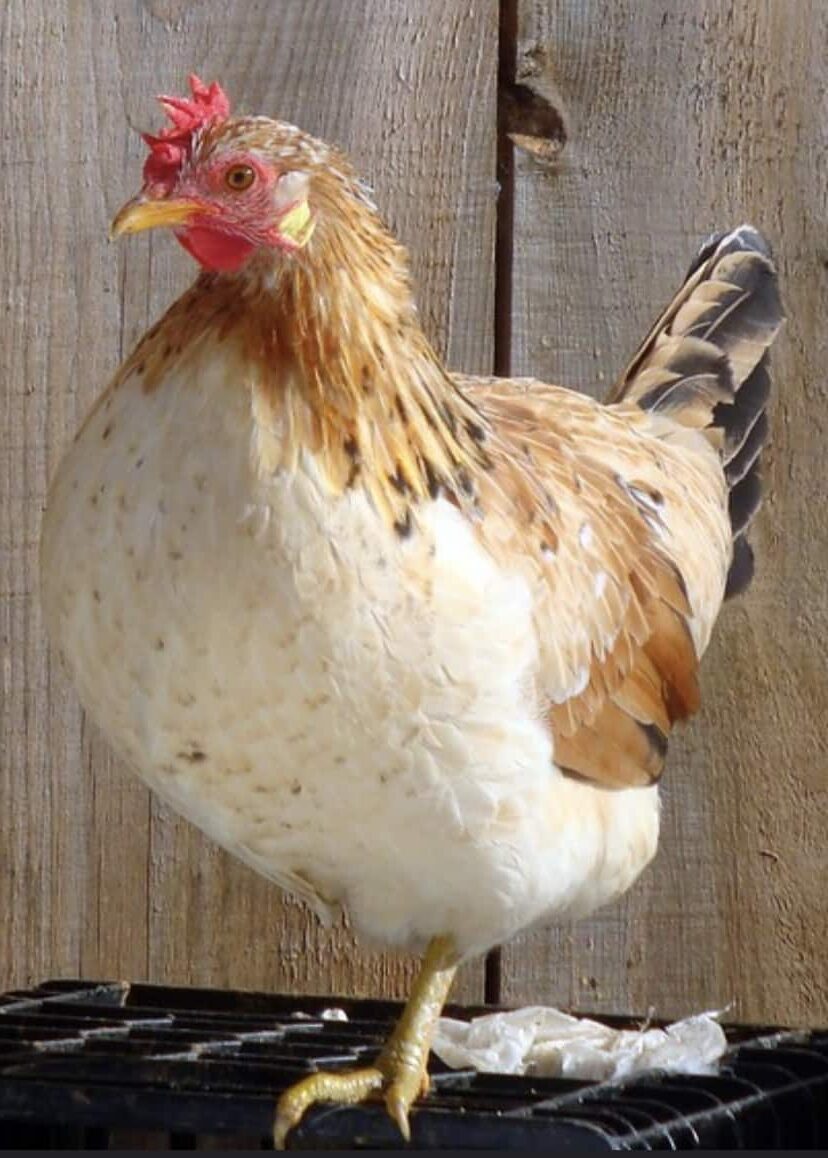Icelandic chickens, also known as landrace fowl, are one of the most genetically robust chickens in the world. As the name suggests, Icelandic birds were developed in the Nordic islands.
Because they were isolated and there was limited land mass for the chickens to roam, Norse breeders took the time to select chickens with nothing but the most resilient traits to come up with this breed.
As a result, the hardy Icelandic chicken is capable of surviving in cold temperatures in rugged environments. They are robust with overall good health, mild temperament, and self-sufficiency, making them one of the best low-maintenance chicken breeds to raise. They are excellent foragers and thrive in areas they can find their own food.
If you are a backyard chicken owner or farmer looking for a resilient, dual-purpose breed, consider the Icelandics chicken. Here are some facts and information about this hardy heritage fowl.
Icelandic Chicken Personality and Temperament
The Icelandic chicken breed is known for its even-keeled and docile temperament and personality. They are ideal for first-time chicken keepers who want a breed that is:
- Easy to handle
- Self-reliant
- Friendly
- Can thrive in a mixed flock
- Great with children
The Icelandic chicken gets along well with people as well as other chicken breeds. They are excellent foragers and, as such, prefer to live on large tracts of land where they can roam and search for their own food. Provide opportunities for free ranging to minimize stress. They don’t do well in confinement. They will typically roost at night.
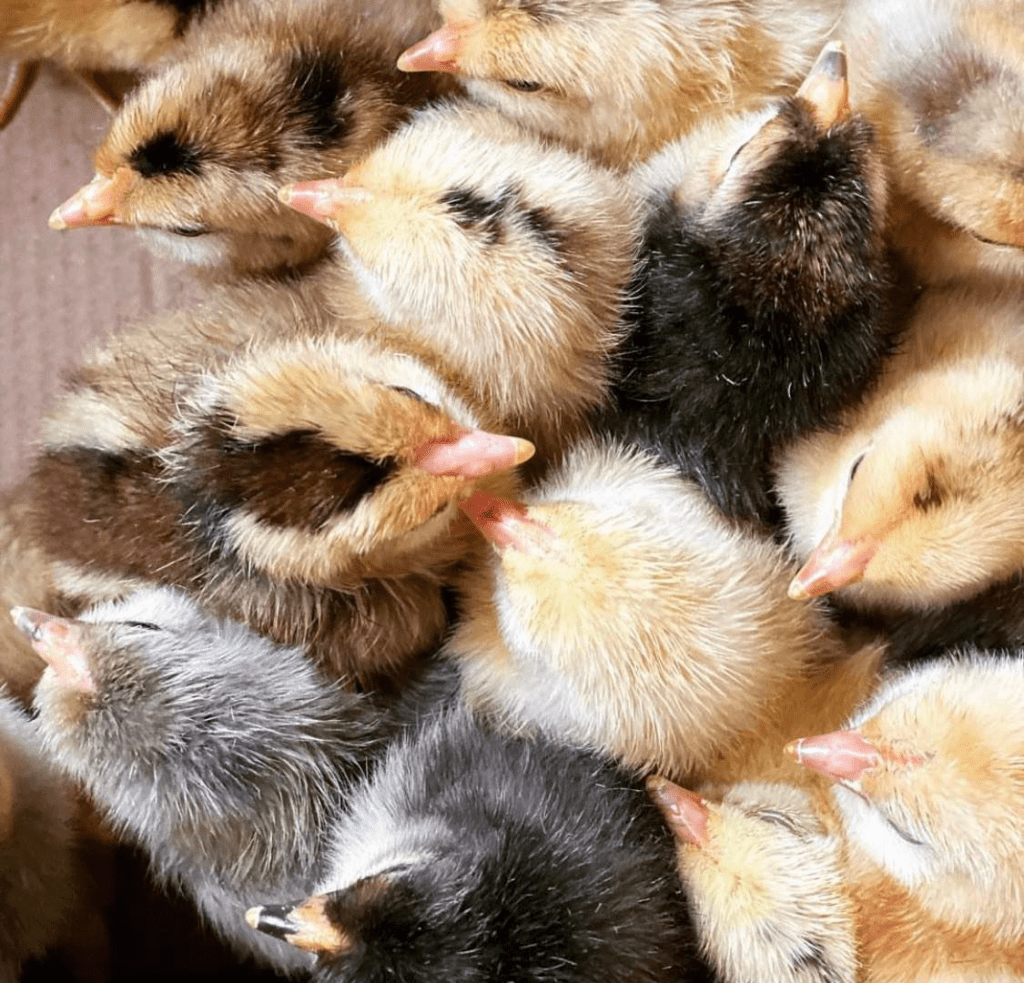
If you keep a rooster among your hens, you can hatch chicks to increase your flock. You can raise the females for eggs and keep one or two males while culling the rest for meat. Icelandic hens get broody and tend to be good mothers who take very good care of their chicks. Icelandic chicks learn to be self-sufficient quickly, making them perfect for the modern homestead.
Icelandic Chicken Egg Production
One of the best and most profitable traits of the Icelandic chicken is that the hens are prolific layers. Icelandic chickens can start laying eggs at around 16 weeks, much earlier than many other breeds. In the right conditions, the Icelandic hen can lay eggs all year round.
On average, Icelandic hens can lay up to 180 eggs per year, or around 4 eggs per week. While this isn’t at par with the best egg laying chickens such as the Rhode Island Red and Leghorn hens, it’s still almost up there among strong layers. The eggs tend to be ivory, cream, tan, or white and are large or medium in size.
Like with all chickens, Icelandic hens don’t need a rooster to start laying eggs. However, a rooster is necessary if you want fertilized eggs (eggs that can hatch into chicks) that can help grow your flock. If you maintain a ratio of one rooster to 10 hens, you can ensure good egg production and flock progression.
Icelandic Chicken Egg Facts
- Number of eggs per year: 100 to 180
- Number of eggs per lifetime: Up to 400
- Egg size: Medium-sized to large, depending on the diet and age of the bird
- Icelandic egg color: Tan, ivory, white, and cream
- Number of eggs per week: 3 to 4
Icelandic Chicken Appearance
Here are some of the most common traits most Icelandic chickens share. Their feathering and colors will vary based on their parentage. They are medium sized.
Icelandic chicken weight
- Mature Icelandic hens weigh approximately 3 – 3.5 pounds.
- Mature Icelandic roosters are slightly heavier, weighing about 4.5 – 5.25 pounds. Carcass weight for roosters is between 2 – 2.5 pounds.
Featherless colored legs
Icelandic chickens are clean-legged. Most of the different families have yellow legs, although it’s not uncommon to find green, gray, blue-tinted, or white legs.
Colored ears
Although this can differ, most Icelandic chickens have off-white or white ears. Some may have streaks of red on their ears.
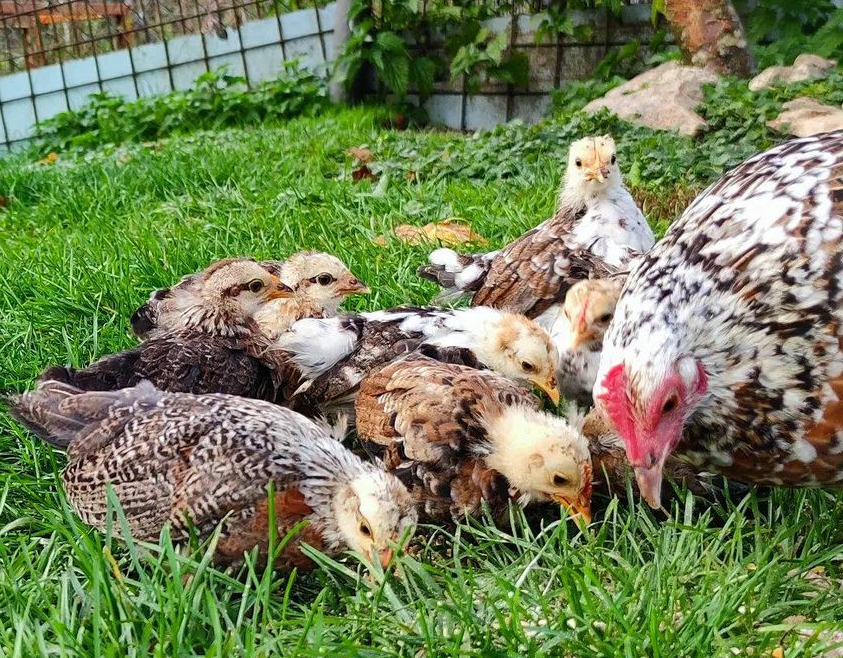
Tail feathers
Both sexes have tail feathers that sit high.
Wattles
Most of the hens have wattles that vary in size, while the roosters have long wattles.
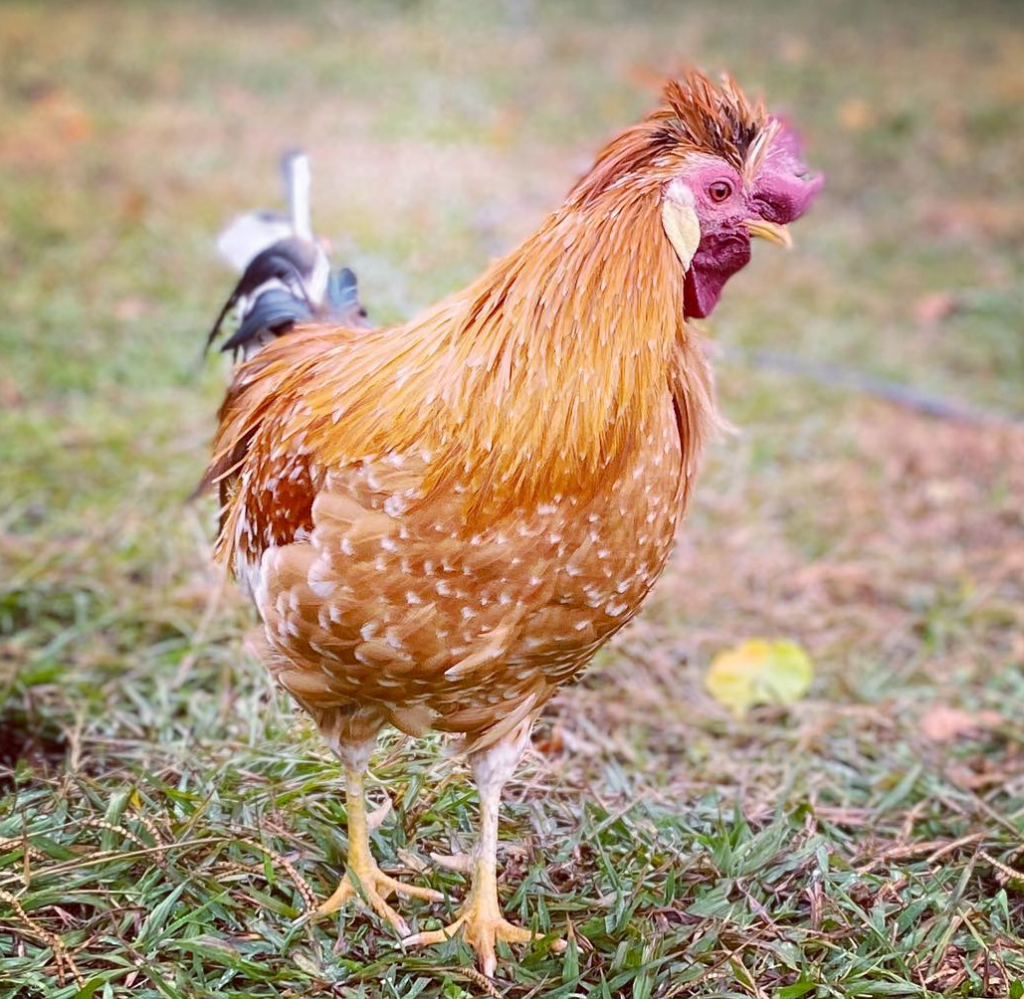
Icelandic Rooster
Although they don’t grow as large as some other types, the Icelandic rooster can get rather rowdy and aggressive around the farm despite being a generally docile bird.
This happens when there are many other roosters around and not enough hens. Flock owners will often cull the cockerels for their meat to ensure a proper hen-to-rooster ratio.
Keep stress to a minimum. In addition to having a minimum of 8 – 10 hens per rooster, provide opportunities for free ranging and foraging, proper shelter from predators and adverse weather, and plenty of feeders and waterers.
Why Raise Icelandic Chicken?
Raising the Icelandic poultry breed as part of your backyard chicken flock can offer you more than just pride. Here are some reasons why you might want to consider raising Icelandic chickens.
They Are Easy to Raise
This is one of the best traits of the Icelandic chicken—it’s a self-sufficient bird that is extremely easy to raise. All you have to do is provide them with enough land to roam, and they will forage for their own food. Though most flock owners will provide the basic care required when raising chickens: nutritious feed; fresh water; shelter; nesting boxes; protection from predators.
In cold months when foraging may be limited, it’s important to provide supplemental feed.
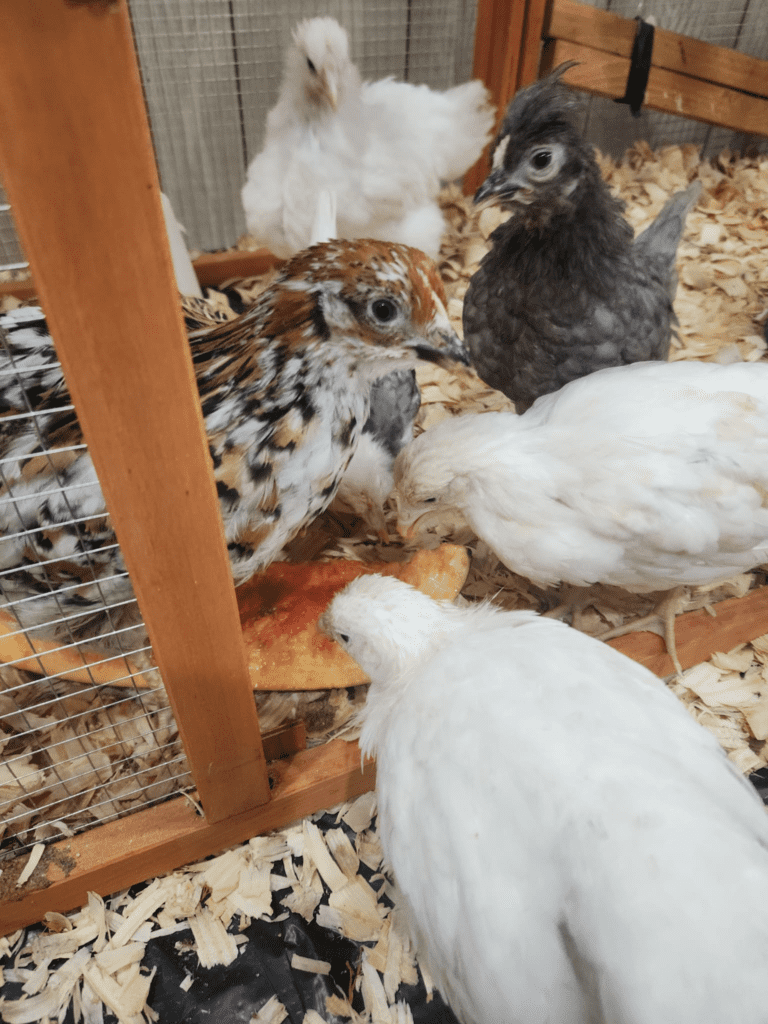
They Are Friendly and Docile
Unlike some chicken breeds, like the Shamo breed, the Icelandic chicken breed doesn’t have aggressive tendencies.
While the roosters might fight for mating rights from time to time, this breed of chicken isn’t unnecessarily aggressive toward other chicken breeds on the farm. They typically do well in mixed breeds. They are also quite friendly toward humans, which makes them ideal for farmsteads with children.
It’s a Dual-Purpose Breed
Since this is a medium-sized bird, it’s typically better at egg production than meat. Although Icelandic chickens are often bred primarily for their eggs, this heritage landrace breed can offer up a reasonable amount of meat as the roosters can grow to 5+ pounds. Their meat is considered to be high quality.
That’s why you will often find that the Icelandic chicken is raised for both its egg production prowess and meat production.
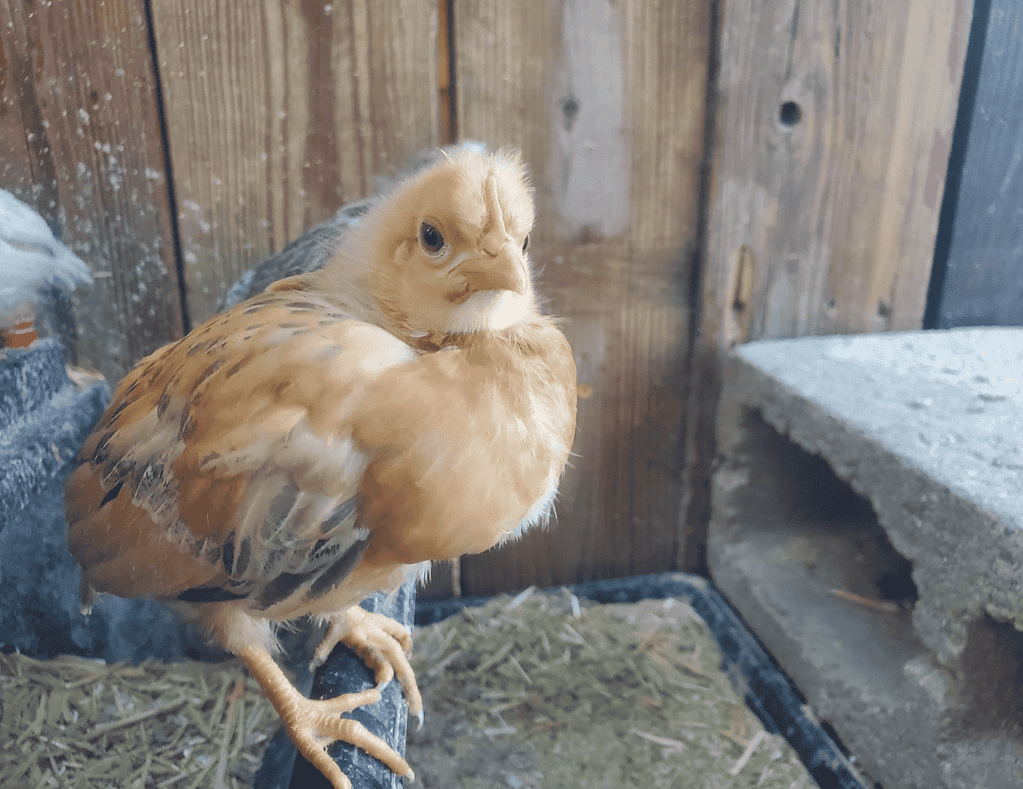
Names for Icelandic Chickens
This breed goes by several names, including Icelandics chickens and Icies. Where they come from in Iceland, these names often mean different things, from chickens of the settlers to settlement chickens and even Viking hens. According to Mother Earth News, they are also called Haughænsni, meaning “pile chickens.” Excellent foragers, these chickens will seek out food in debris piles of composting leaves, compost, wood piles, etc.
Icelandic Chicken History
The first recordings of the Icelandic chicken were made around the ninth and tenth centuries. This breed developed during the Icelandic settlement and is believed to have been brought by Norse settlers.
As the years passed, the breed developed into a hardy chicken breed that could withstand the cold and even lay eggs during winter. For centuries, the Icelandic chicken was the only breed of chicken on the island until around 1930, when chicken imports started to happen.
As a result, coupled with a host of other factors such as parasites and disease, the pure Icelandic chicken breed started fading away and became endangered. To protect it, the government devised policies to preserve this landrace breed.
Thanks to these measures, several Icelandic chickens were saved and used to produce the current modern Icelandic chicken. Although the numbers are improving, they are still low.
According to the Livestock Conservancy, it is estimated that about 4,000 Icelandic chickens are on the island and about another 1,000 in North America. As such, the Livestock Conservancy has placed them on the threatened list.
Family Lines
There are four main family trees form the Icelandic chickens’ different distinctions, according to Whippoorwill Farm. These families are named after the farm the chickens were bred and raised. While the members of all these family trees tend to be similar in terms of temperament, they vary regarding color, feathers, and combs.
- Sigrid Line: This line is also often referred to as the Steiner II line because it originated from the Steiner II and Syðstu Fossum Farm and was developed by Sigrid Thordarson in 1997–1998.
- Behl Line: Developed by Lyle Behl, this line is often referred to as the Kolsholt Line and came from the Kolsstaðir Farm in 2003.
- Hlesey Line: This line is synonymous with Lallemand and Bentley from the Hlesey Farm. It’s also considered an import. The Whippoorwill Farm manages the Lallemand import.
- Husatoftir Line: Also known as Vala’s line, after Vala Withrow of the Husatoftir Farm.
FAQs
What are Icelandic chickens good for?
Icelandic chickens are good for eggs and to forage around a homestead. You can also use them for meat. They make productive pets as they are friendly and good for eggs.
What color eggs do Icelandic chickens lay?
Their eggs range from white to tan, often being a creamy beige. It will vary by hen.
How big are Icelandic chickens?
They are considered to be medium-sized chickens. Icelandic roosters weigh up to 5.25 pounds and Icelandic hens up to 3.5 pounds.
What age do Icelandic chickens lay eggs?
Icelandic hens can lay eggs when they are around 4 months old.
Are Icelandic chickens good for meat?
Yes, Icelandic chickens are good for meat production (though better for egg production). You can cull unproductive hens and the males and use them for meat if you want to downsize your flock.
What are the benefits of owning Icelandic chickens?
This is a landrace, heritage breed with ties back to Iceland. Keeping their lineage intact can help increase their numbers. Many flock owners find many benefits to raising them for egg and meat production, as foragers, and as pets.
Where can I buy Icelandic chickens?
You can buy them from an Icelandic chickens hatchery or look online for people who sell them from their backyard flocks.
How cold hardy are Icelandic chickens?
Icelandic chickens can withstand cold temperatures but will need shelter. Maintaining a well-ventilated, draft-free coop will be important in cold, winter months. Keeping them dry is essential so they don’t get frostbite.
Still, they are able to thrive in the cold as that is their origin. Hens will lay throughout the winter months. Continue to provide nutritious food for them, especially as opportunities for foraging may be limited.
What do you need to raise Icelandic chickens?
This breed in particular will benefit from opportunities to forage. Like with raising all breeds, there are things all chickens need. These include nutritious food, access to fresh water, exposure to fresh air, a secure shelter to protect them from predators, enough space so they are not stressed, and protection from the elements.
If you keep a rooster among your hens, you will want to be sure to have a minimum of 8 – 10 hens to minimize their stress.
Do Icelandic chickens have any health concerns?
They require basic care to stay healthy. Icelandic chickens are very hardy and excellent foragers, and when given the opportunity, tend to get most of their nutrition from the land.
This means that they don’t have very many health concerns. To ensure they don’t become malnourished, provide a healthy diet of backup feed and layer feed for laying hens. They also need access to fresh water. Regularly check them for signs of distress and health concerns like you would with other livestock. Keep them dry in cold months.
Are Icelandic chickens good at flying?
While most chickens aren’t technically good flyers, the Icelandic chicken can fly. It’s part of their survival instinct.
How well do Icelandic chickens handle heat?
These chickens are cold, hardy, so with general care, they can handle the cold very well. Thankfully, they can also handle a host of other temperature ranges very well, meaning they can deal with heat just as well as with cold. Provide shade protection from the sun and plenty of fresh water during hot times.
The Breed to Raise
Because they are somewhat self-sufficient and low maintenance, they are easy to raise, even as a commercial chicken. If you have some land, this may be a good chicken to raise.
Another excellent trait of this chicken breed is its adaptability. It’s renowned for its hardiness and ability to withstand extremely cold temperatures. These chickens and roosters are cold-hardy and very adaptable. The hens are good mothers that take excellent care of Icelandic chicks and produce a good number of eggs from a rather young age.
Even though they aren’t very big, they still produce a reasonable amount of meat. Being friendly and having an easy-going temperament makes them perfect for people who are just starting out raising chickens and want a breed that’s easy to manage.
If you are considering a mixed flock, consider raising Icelandics with other mild, friendly birds such as Ameraucana chickens, Cochin chickens, Dominiques, and Gold Star chickens.

